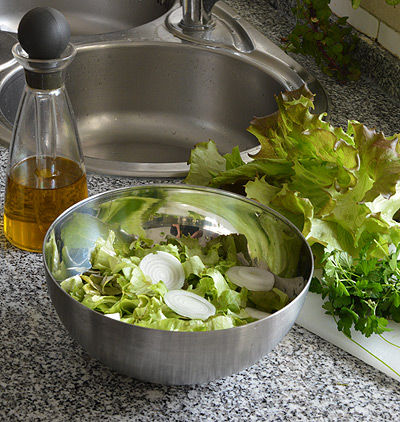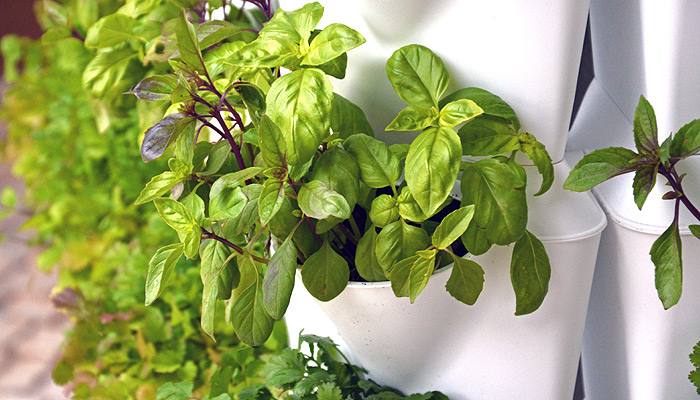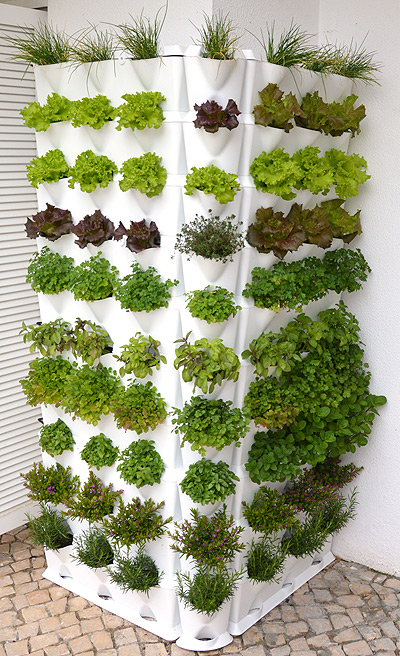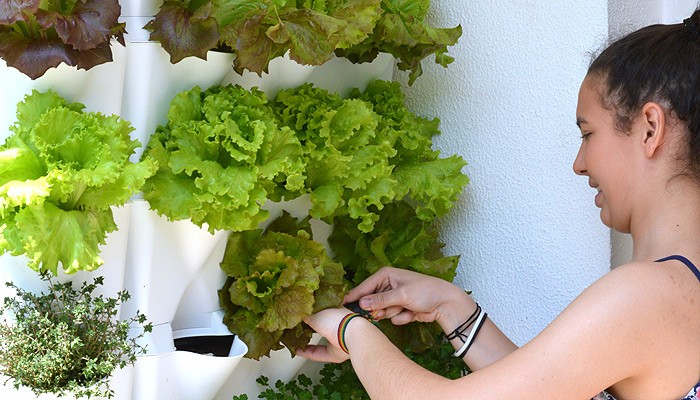Family daily life
I’m extremely happy with my vegetable garden. I wouldn’t change anything about it — just its scale. Without any doubt, I’ll increase its size in the near future.
When I decided to grow vegetables at home, the decisive element that outweighed all others was my family. I wanted to teach my daughters how to grow vegetables, and for them to understand the benefits of this natural lifestyle (not to mention they got to eat authentically flavoured salads and meals).

My daughters understand now how much pleasure and passion goes into growing something as beautiful as strawberries — my first production. Because they were still little and loved the red-tinted sweet fruits, the choice came easy. It still makes me overwhelmingly happy to watch them pick the ripe fruits and quickly eat them. Over the years, they’ve learned that any fruit, when it’s freshly and timely picked, tastes better than a supermarket-bought fruit.
These experiences have contributed to their personal growth and have changed the way they interact with family, friends, and overall community. My vegetable patch grows, my daughters grow taller, and the domestic routine grows closer to the true routine of a community that shares fresh produce and gets together to prepare meals.
As a new and important element of the family, the vegetable garden plays an important role in our everyday life: ‘Mum, do you want a lemonade with fresh peppermint?’ ‘Dad, please teach me how to pick celery because mum wants to use it to season the rice.’
How my vegetable garden grew
As I began to understand Minigarden’s true potential, I became increasingly adventurous with the choice of plants and shapes of the potting system. At first the containers were assembled in a simple display to fence in our house’s garden from the common garden, but my wife soon asked me to change it to fit our supplying needs. The strawberries and ornamental plants gave way to vegetables (lettuce, spinach, cabadge, onions) and aromatic plants (parsley, coriander, and spring onions), all grown in the same initial 18 pots to which I added Minigarden Corner and the Drip Irrigation Kit in 2012.

Today, I have a 70-plant urban vegetable garden (in less than 0,5m2 of paving). I always use the herbs in my cooking, especially in dinner parties with friends — many of whom have already given in to the pleasures of Minigarden and urban planting. As an absolute fan of the Mediterranean diet, I chose plants that fit my eating preferences but are also adapted to the local conditions. After 3 weeks, I started collecting the first aromatic plants, and by the fourth week the first lettuce leafs.
Tips to a greener vegetable garden
 I have to start by mentioning one of the main advantages of Minigarden: simple maintanance when compared to the maintanance of the usual vegetable patch. Minigarden is the perfect tool for a healthy vegetable garden because it suppresses the need for pulling weeds.
I have to start by mentioning one of the main advantages of Minigarden: simple maintanance when compared to the maintanance of the usual vegetable patch. Minigarden is the perfect tool for a healthy vegetable garden because it suppresses the need for pulling weeds.- The second great benefit of Minigarden is the amount of space it occupies — or lack thereof. As a vertical growing system, it allows the growth of more than 50 plants in just 0,5m2.
- I also have to mention how easy it is to substitute plants within Minigarden, namely seasonal plants (lettuce, parsley, coriander), as well as the possibility of keeping everything tidy and organised. In my Minigarden system each horizontal line represents a different kind of plant.
- At the moment, I’m growing seasonal plants (lettuce, coriander, parsley, and basil) which will be used and substitute at the end of their life cycle. However, there are a couple of techniques to extend their cycle like trimming off flowers.
- The high standard of the watering and nutrition is essential to keep a healthy vegetable garden. I adjust the watering programme to match the weather conditions, and air humidity (i.e. on dry summer days with temperatures above 30º water your garden 2 – 3 times every day for 2 minutes; during spring when temperatures reach 15ºC – 24ºC do the watering 3 times per week for no more than 2 minutes).
- I use Minigarden Grow Up Green after doing the planting to ensure vegetative growth, and after I apply Minigarden Grow Up Brown – Biological supplement, as a more common nutrition.
- After a tiring day at work, I always check up on my vegetable garden. First, I place a finger in one of the pots, dig it in the substrate and check if it’s humid, dry or soaked. Then, I adjust the watering accordingly.
- I also check for bugs (a good sign of future pests), dry leafs or spotted leafs, and remove them.
- Finally, it is important to control the vertical growth of dwarf shrubs (basil, for example) through regular pruning.

 Cymraeg
Cymraeg
